-

Apr
20
Interpretive Summary: Strategies for accommodating gene-edited sires and their descendants in genetic evaluations
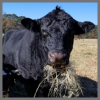
Coupling gene editing, a technology with the potential to make specific changes to DNA sequence (e.g., quantitative trait nucleotide, QTN), with genomic selection can generate faster genetic gain in economically important traits. However, gene editing would impact the genetic relationship among individuals and, consequently, genetic evaluations. The objectives of this study were to understand how gene editing impacts genetic prediction and develop strategies to mitigate potential errors in estimated breeding values (EBV).
Read more
-

Apr
20
Interpretive Summary: Convergent changes in melanocortin receptor 1 gene are associated with black-headed coat color in sheep
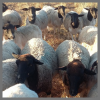
The diverse colors of sheep not only help to distinguish different breeds but also provide an ideal model to study the genetics underlying mammalian coat color variations. One unique coat color in sheep is the black-headed type, as represented by the famous meat breed Dorper sheep from Africa and Bayinbuluke sheep from Asia. In this study, we compared the genomes of black-headed sheep with all-white sheep in order to identify genes responsible for this distinguishable coat color.
Read more
-

Apr
20
Interpretive Summary: Financial strain of COVID-19 and its impact on willingness-to-pay for equine care

COVID-19 had a substantial impact on markets and livelihoods. Jobs were affected and the cost of goods increased as products were in short supply, driving up prices for essential and nonessential equine care for owners, caretakers, and other associated individuals.
Read more
-

Apr
20
Interpretive Summary: Apparent total tract macronutrient digestibility of mildly cooked human-grade vegan dog foods and their effects on the blood metabolites and fecal characteristics, microbiota, and metabolites of adult dogs
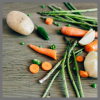
Vegan, mildly cooked, and human-grade dog foods are increasing in popularity, but few studies have been performed to examine their performance. Our objective was to determine the apparent total tract digestibility (ATTD) of mildly cooked human-grade vegan dog foods and their effects on blood metabolites and fecal microbiota, characteristics, and metabolites of dogs.
Read more
-

Apr
13
Interpretive Summary: Comparison of three maternal composite sheep breeds managed under pasture lambing and purebred or terminal mating systems: ewe body weight, reproductive efficiency, and longevity
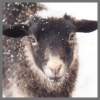
Production systems across the U.S. sheep industry are diverse, ranging from intensive management to lower-input and extensive operations. Extensive flocks are more nutritionally reliant on grazing, have lower labor costs, and have limited housing for animals.
Read more
-

Apr
13
Interpretive Summary: Amino acid digestibility and protein quality of mealworm-based ingredients using the precision-fed cecectomized rooster assay
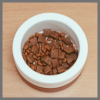
Mealworms may serve as an alternative protein source for pet foods because of their high protein content and low environmental footprint. The amino acid (AA) content and protein quality of mealworm-based ingredients may vary depending on their composition and processing, however, so testing is required.
Read more
-

Apr
13
Interpretive Summary: Taraxasterol alleviates fatty acid-induced lipid deposition in calf hepatocytes by decreasing ROS production and endoplasmic reticulum stress
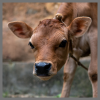
Fatty liver is a common occurrence in the early postpartum period, partly due to the large influx of fatty acids into the liver during adipose tissue lipolysis. Because there is a linkage between fatty acid metabolism, oxidative stress, and lipid deposition in hepatocytes of nonruminant animals, we evaluated the potential therapeutic roles of Taraxasterol on reactive oxygen species and endoplasmic reticulum (ER) stress in vitro.
Read more
-

Apr
13
Interpretive Summary: The effects of standardized ileal digestible His to Lys ratio on growth performance, intestinal health, and mobilization of histidine-containing proteins in pigs at 7 to 11 kg body weight
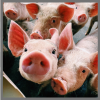
Histidine is an essential amino acid for protein synthesis, but it also plays a vital role in the metabolic system of pigs. An accurate assessment of His requirement provides pivotal information for efficient growth and health of pigs.
Read more
-

Apr
13
Interpretive Summary: Effects of a Saccharomyces cerevisiae fermentation product on fecal characteristics, metabolite concentrations, and microbiota populations of dogs subjected to exercise challenge

The objective of this study was to determine the fecal characteristics, microbiota, and metabolites of dogs fed a Saccharomyces cerevisiae fermentation product (SCFP) and subjected to exercise challenge in untrained and trained states. Thirty-six adult dogs were randomly assigned to control or SCFP-supplemented (250 mg/d) diets and fed for 10 wk.
Read more
-

Apr
13
Interpretive Summary: Glucose-induced enhanced anti-oxidant activity inhibits apoptosis in goose fatty liver
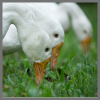
No significant pathological symptoms were observed in the liver of goose after overfeeding, suggesting that a specific protection mechanism exists in goose liver. Previous studies have shown that mitochondria may participate in the formation of goose fatty liver by improving its energy metabolism and the production of precursor metabolites.
Read more
-

Apr
13
Interpretive Summary: Evaluation of oxidized beta-carotene on sow and piglet immune systems, sow reproductive performance, and piglet growth
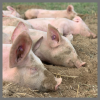
Beta-carotene is a known antioxidant found in most red and orange-pigmented vegetables and has been documented to have health benefits. However, beta-carotene has been reported to gain oxygen molecules spontaneously, thus oxidizing it.
Read more
-

Apr
06
ASAS CEO Search
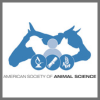
To Apply: Complete the online form at https://www.asas.org/asas-ceo-candidates
Application materials will be accepted only via the above link.
Do you know someone that would be a great candidate for the CEO position? If so, submit their information on the online form at https://www.asas.org/asas-ceo-nominations. Screening of applicants will begin on May 26, 2023.
Read more
-

Apr
06
Interpretive Summary: Total fishmeal replacement by defatted Tenebrio molitor larvae meal induces alterations in intermediary metabolism of European sea bass (Dicentrarchus labrax)
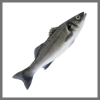
Insect meal has been increasingly considered as novel protein source in diets for different animal models, including fish. European sea bass is one of the most important fish species in Europe, particularly in the Mediterranean.
Read more
-

Apr
06
Interpretive Summary: Antimicrobial and antibiofilm activity of isoorientin against carbapenem non-sensitive Escherichia coli from raw milk of goats
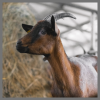
Escherichia coli (E. coli) has been the major foodborne bacteria that can cause diarrhea, gastroenteritis, and some complications, and also used as fecal bacteria pollution indicator in food. Carbapenems are considered as the last resort to life-threatening E. coli infections.
Read more
-

Apr
06
Interpretive Summary: Dietary yeast beta 1,3/1,6 glucan supplemented to adult Labrador Retrievers alters peripheral blood immune cell responses to vaccination challenge without affecting protective immunity

Companion animal food trends reflect the growing demand for healthy, functional foods. Yeast-derived β-glucans have been shown to train the human immune system to respond and resolve inflammation quickly, which aligns with companion animal health goals of providing disease protection without excessive inflammation.
Read more
-

Apr
06
Interpretive Summary: Wet-food diet promotes the recovery from surgery of castration and control of body weight in adult young cats

Castration is a surgical operation common in pet cats and dogs, and weight gain is often observed a period after castration. Nutritional management can be important for animal health in both processes.
Read more
-

Apr
06
Interpretive Summary: Variations in the 24 h temporal patterns and time budgets of grazing, rumination, and idling behaviors in grazing dairy cows in a New Zealand system

This study explored how grazing dairy cows pattern their essential such as including grazing, rumination, and idling, and how they distribute their time for those behaviors over 24 h. We used a group of spring-calved grazing dairy cows affiliated with different breeds, milking ages, and genetic merits and recorded their grazing and rumination behaviors for the whole milking period.
Read more
-

Apr
06
Interpretive Summary: Analysis of runs of homozygosity of cattle living in different climate zones

Domestication and evolution of cattle originated different modern breeds in different places worldwide. The interaction between natural and artificial selection and the adaptation to environment shaped the genome, and the three different types of cattle here considered (taurus, indicus, and composite) may harbor different selection signatures.
Read more
-

Mar
29
DAIRY PRIDE Act of 2023 is introduced
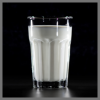
As a response to the United States Food and Drug Administration’s (FDA’s) proposed guidance regarding labeling of non-dairy products, Senators Susan Collins (R-ME) and Angus King (I-ME) introduced The Defending Against Imitations and Replacements of Yogurt, milk, and cheese to Promote Regular Intake of Dairy Everyday Act (DAIRY PRIDE Act) of 2023. The DAIRY PRIDE Act would require non-dairy products made from nuts, seeds, plants, and algae to no longer be mislabeled with terms such as milk, yogurt, or cheese.
Read more
-

Mar
29
FDA releases guidance for plant-based milk-alternative beverage labeling
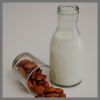
The United States Food and Drug Administration (FDA) has released a set of guidelines for plant-based milk-alternative beverage labeling. The guidance also includes recommendations on the use of voluntary nutrient statements. According to the FDA, the use of these voluntary nutrient statements would provide consumers with additional nutrition information to help them understand certain nutritional differences between these products and milk and make informed dietary choices.
Read more
 AprInterpretive Summary: Strategies for accommodating gene-edited sires and their descendants in genetic evaluations
AprInterpretive Summary: Strategies for accommodating gene-edited sires and their descendants in genetic evaluations Coupling gene editing, a technology with the potential to make specific changes to DNA sequence (e.g., quantitative trait nucleotide, QTN), with genomic selection can generate faster genetic gain in economically important traits. However, gene editing would impact the genetic relationship among individuals and, consequently, genetic evaluations. The objectives of this study were to understand how gene editing impacts genetic prediction and develop strategies to mitigate potential errors in estimated breeding values (EBV).
Coupling gene editing, a technology with the potential to make specific changes to DNA sequence (e.g., quantitative trait nucleotide, QTN), with genomic selection can generate faster genetic gain in economically important traits. However, gene editing would impact the genetic relationship among individuals and, consequently, genetic evaluations. The objectives of this study were to understand how gene editing impacts genetic prediction and develop strategies to mitigate potential errors in estimated breeding values (EBV). AprInterpretive Summary: Convergent changes in melanocortin receptor 1 gene are associated with black-headed coat color in sheep
AprInterpretive Summary: Convergent changes in melanocortin receptor 1 gene are associated with black-headed coat color in sheep The diverse colors of sheep not only help to distinguish different breeds but also provide an ideal model to study the genetics underlying mammalian coat color variations. One unique coat color in sheep is the black-headed type, as represented by the famous meat breed Dorper sheep from Africa and Bayinbuluke sheep from Asia. In this study, we compared the genomes of black-headed sheep with all-white sheep in order to identify genes responsible for this distinguishable coat color.
The diverse colors of sheep not only help to distinguish different breeds but also provide an ideal model to study the genetics underlying mammalian coat color variations. One unique coat color in sheep is the black-headed type, as represented by the famous meat breed Dorper sheep from Africa and Bayinbuluke sheep from Asia. In this study, we compared the genomes of black-headed sheep with all-white sheep in order to identify genes responsible for this distinguishable coat color. AprInterpretive Summary: Financial strain of COVID-19 and its impact on willingness-to-pay for equine care
AprInterpretive Summary: Financial strain of COVID-19 and its impact on willingness-to-pay for equine care COVID-19 had a substantial impact on markets and livelihoods. Jobs were affected and the cost of goods increased as products were in short supply, driving up prices for essential and nonessential equine care for owners, caretakers, and other associated individuals.
COVID-19 had a substantial impact on markets and livelihoods. Jobs were affected and the cost of goods increased as products were in short supply, driving up prices for essential and nonessential equine care for owners, caretakers, and other associated individuals. AprInterpretive Summary: Apparent total tract macronutrient digestibility of mildly cooked human-grade vegan dog foods and their effects on the blood metabolites and fecal characteristics, microbiota, and metabolites of adult dogs
AprInterpretive Summary: Apparent total tract macronutrient digestibility of mildly cooked human-grade vegan dog foods and their effects on the blood metabolites and fecal characteristics, microbiota, and metabolites of adult dogs Vegan, mildly cooked, and human-grade dog foods are increasing in popularity, but few studies have been performed to examine their performance. Our objective was to determine the apparent total tract digestibility (ATTD) of mildly cooked human-grade vegan dog foods and their effects on blood metabolites and fecal microbiota, characteristics, and metabolites of dogs.
Vegan, mildly cooked, and human-grade dog foods are increasing in popularity, but few studies have been performed to examine their performance. Our objective was to determine the apparent total tract digestibility (ATTD) of mildly cooked human-grade vegan dog foods and their effects on blood metabolites and fecal microbiota, characteristics, and metabolites of dogs. AprInterpretive Summary: Comparison of three maternal composite sheep breeds managed under pasture lambing and purebred or terminal mating systems: ewe body weight, reproductive efficiency, and longevity
AprInterpretive Summary: Comparison of three maternal composite sheep breeds managed under pasture lambing and purebred or terminal mating systems: ewe body weight, reproductive efficiency, and longevity Production systems across the U.S. sheep industry are diverse, ranging from intensive management to lower-input and extensive operations. Extensive flocks are more nutritionally reliant on grazing, have lower labor costs, and have limited housing for animals.
Production systems across the U.S. sheep industry are diverse, ranging from intensive management to lower-input and extensive operations. Extensive flocks are more nutritionally reliant on grazing, have lower labor costs, and have limited housing for animals. AprInterpretive Summary: Amino acid digestibility and protein quality of mealworm-based ingredients using the precision-fed cecectomized rooster assay
AprInterpretive Summary: Amino acid digestibility and protein quality of mealworm-based ingredients using the precision-fed cecectomized rooster assay Mealworms may serve as an alternative protein source for pet foods because of their high protein content and low environmental footprint. The amino acid (AA) content and protein quality of mealworm-based ingredients may vary depending on their composition and processing, however, so testing is required.
Mealworms may serve as an alternative protein source for pet foods because of their high protein content and low environmental footprint. The amino acid (AA) content and protein quality of mealworm-based ingredients may vary depending on their composition and processing, however, so testing is required. AprInterpretive Summary: Taraxasterol alleviates fatty acid-induced lipid deposition in calf hepatocytes by decreasing ROS production and endoplasmic reticulum stress
AprInterpretive Summary: Taraxasterol alleviates fatty acid-induced lipid deposition in calf hepatocytes by decreasing ROS production and endoplasmic reticulum stress Fatty liver is a common occurrence in the early postpartum period, partly due to the large influx of fatty acids into the liver during adipose tissue lipolysis. Because there is a linkage between fatty acid metabolism, oxidative stress, and lipid deposition in hepatocytes of nonruminant animals, we evaluated the potential therapeutic roles of Taraxasterol on reactive oxygen species and endoplasmic reticulum (ER) stress in vitro.
Fatty liver is a common occurrence in the early postpartum period, partly due to the large influx of fatty acids into the liver during adipose tissue lipolysis. Because there is a linkage between fatty acid metabolism, oxidative stress, and lipid deposition in hepatocytes of nonruminant animals, we evaluated the potential therapeutic roles of Taraxasterol on reactive oxygen species and endoplasmic reticulum (ER) stress in vitro. AprInterpretive Summary: The effects of standardized ileal digestible His to Lys ratio on growth performance, intestinal health, and mobilization of histidine-containing proteins in pigs at 7 to 11 kg body weight
AprInterpretive Summary: The effects of standardized ileal digestible His to Lys ratio on growth performance, intestinal health, and mobilization of histidine-containing proteins in pigs at 7 to 11 kg body weight Histidine is an essential amino acid for protein synthesis, but it also plays a vital role in the metabolic system of pigs. An accurate assessment of His requirement provides pivotal information for efficient growth and health of pigs.
Histidine is an essential amino acid for protein synthesis, but it also plays a vital role in the metabolic system of pigs. An accurate assessment of His requirement provides pivotal information for efficient growth and health of pigs. AprInterpretive Summary: Effects of a Saccharomyces cerevisiae fermentation product on fecal characteristics, metabolite concentrations, and microbiota populations of dogs subjected to exercise challenge
AprInterpretive Summary: Effects of a Saccharomyces cerevisiae fermentation product on fecal characteristics, metabolite concentrations, and microbiota populations of dogs subjected to exercise challenge The objective of this study was to determine the fecal characteristics, microbiota, and metabolites of dogs fed a Saccharomyces cerevisiae fermentation product (SCFP) and subjected to exercise challenge in untrained and trained states. Thirty-six adult dogs were randomly assigned to control or SCFP-supplemented (250 mg/d) diets and fed for 10 wk.
The objective of this study was to determine the fecal characteristics, microbiota, and metabolites of dogs fed a Saccharomyces cerevisiae fermentation product (SCFP) and subjected to exercise challenge in untrained and trained states. Thirty-six adult dogs were randomly assigned to control or SCFP-supplemented (250 mg/d) diets and fed for 10 wk. AprInterpretive Summary: Glucose-induced enhanced anti-oxidant activity inhibits apoptosis in goose fatty liver
AprInterpretive Summary: Glucose-induced enhanced anti-oxidant activity inhibits apoptosis in goose fatty liver No significant pathological symptoms were observed in the liver of goose after overfeeding, suggesting that a specific protection mechanism exists in goose liver. Previous studies have shown that mitochondria may participate in the formation of goose fatty liver by improving its energy metabolism and the production of precursor metabolites.
No significant pathological symptoms were observed in the liver of goose after overfeeding, suggesting that a specific protection mechanism exists in goose liver. Previous studies have shown that mitochondria may participate in the formation of goose fatty liver by improving its energy metabolism and the production of precursor metabolites. AprInterpretive Summary: Evaluation of oxidized beta-carotene on sow and piglet immune systems, sow reproductive performance, and piglet growth
AprInterpretive Summary: Evaluation of oxidized beta-carotene on sow and piglet immune systems, sow reproductive performance, and piglet growth Beta-carotene is a known antioxidant found in most red and orange-pigmented vegetables and has been documented to have health benefits. However, beta-carotene has been reported to gain oxygen molecules spontaneously, thus oxidizing it.
Beta-carotene is a known antioxidant found in most red and orange-pigmented vegetables and has been documented to have health benefits. However, beta-carotene has been reported to gain oxygen molecules spontaneously, thus oxidizing it. AprASAS CEO Search
AprASAS CEO Search To Apply: Complete the online form at https://www.asas.org/asas-ceo-candidates
To Apply: Complete the online form at https://www.asas.org/asas-ceo-candidates AprInterpretive Summary: Total fishmeal replacement by defatted Tenebrio molitor larvae meal induces alterations in intermediary metabolism of European sea bass (Dicentrarchus labrax)
AprInterpretive Summary: Total fishmeal replacement by defatted Tenebrio molitor larvae meal induces alterations in intermediary metabolism of European sea bass (Dicentrarchus labrax) Insect meal has been increasingly considered as novel protein source in diets for different animal models, including fish. European sea bass is one of the most important fish species in Europe, particularly in the Mediterranean.
Insect meal has been increasingly considered as novel protein source in diets for different animal models, including fish. European sea bass is one of the most important fish species in Europe, particularly in the Mediterranean. AprInterpretive Summary: Antimicrobial and antibiofilm activity of isoorientin against carbapenem non-sensitive Escherichia coli from raw milk of goats
AprInterpretive Summary: Antimicrobial and antibiofilm activity of isoorientin against carbapenem non-sensitive Escherichia coli from raw milk of goats Escherichia coli (E. coli) has been the major foodborne bacteria that can cause diarrhea, gastroenteritis, and some complications, and also used as fecal bacteria pollution indicator in food. Carbapenems are considered as the last resort to life-threatening E. coli infections.
Escherichia coli (E. coli) has been the major foodborne bacteria that can cause diarrhea, gastroenteritis, and some complications, and also used as fecal bacteria pollution indicator in food. Carbapenems are considered as the last resort to life-threatening E. coli infections. AprInterpretive Summary: Dietary yeast beta 1,3/1,6 glucan supplemented to adult Labrador Retrievers alters peripheral blood immune cell responses to vaccination challenge without affecting protective immunity
AprInterpretive Summary: Dietary yeast beta 1,3/1,6 glucan supplemented to adult Labrador Retrievers alters peripheral blood immune cell responses to vaccination challenge without affecting protective immunity Companion animal food trends reflect the growing demand for healthy, functional foods. Yeast-derived β-glucans have been shown to train the human immune system to respond and resolve inflammation quickly, which aligns with companion animal health goals of providing disease protection without excessive inflammation.
Companion animal food trends reflect the growing demand for healthy, functional foods. Yeast-derived β-glucans have been shown to train the human immune system to respond and resolve inflammation quickly, which aligns with companion animal health goals of providing disease protection without excessive inflammation. AprInterpretive Summary: Wet-food diet promotes the recovery from surgery of castration and control of body weight in adult young cats
AprInterpretive Summary: Wet-food diet promotes the recovery from surgery of castration and control of body weight in adult young cats Castration is a surgical operation common in pet cats and dogs, and weight gain is often observed a period after castration. Nutritional management can be important for animal health in both processes.
Castration is a surgical operation common in pet cats and dogs, and weight gain is often observed a period after castration. Nutritional management can be important for animal health in both processes. AprInterpretive Summary: Variations in the 24 h temporal patterns and time budgets of grazing, rumination, and idling behaviors in grazing dairy cows in a New Zealand system
AprInterpretive Summary: Variations in the 24 h temporal patterns and time budgets of grazing, rumination, and idling behaviors in grazing dairy cows in a New Zealand system This study explored how grazing dairy cows pattern their essential such as including grazing, rumination, and idling, and how they distribute their time for those behaviors over 24 h. We used a group of spring-calved grazing dairy cows affiliated with different breeds, milking ages, and genetic merits and recorded their grazing and rumination behaviors for the whole milking period.
This study explored how grazing dairy cows pattern their essential such as including grazing, rumination, and idling, and how they distribute their time for those behaviors over 24 h. We used a group of spring-calved grazing dairy cows affiliated with different breeds, milking ages, and genetic merits and recorded their grazing and rumination behaviors for the whole milking period. AprInterpretive Summary: Analysis of runs of homozygosity of cattle living in different climate zones
AprInterpretive Summary: Analysis of runs of homozygosity of cattle living in different climate zones Domestication and evolution of cattle originated different modern breeds in different places worldwide. The interaction between natural and artificial selection and the adaptation to environment shaped the genome, and the three different types of cattle here considered (taurus, indicus, and composite) may harbor different selection signatures.
Domestication and evolution of cattle originated different modern breeds in different places worldwide. The interaction between natural and artificial selection and the adaptation to environment shaped the genome, and the three different types of cattle here considered (taurus, indicus, and composite) may harbor different selection signatures. MarDAIRY PRIDE Act of 2023 is introduced
MarDAIRY PRIDE Act of 2023 is introduced As a response to the United States Food and Drug Administration’s (FDA’s) proposed guidance regarding labeling of non-dairy products, Senators Susan Collins (R-ME) and Angus King (I-ME) introduced The Defending Against Imitations and Replacements of Yogurt, milk, and cheese to Promote Regular Intake of Dairy Everyday Act (DAIRY PRIDE Act) of 2023. The DAIRY PRIDE Act would require non-dairy products made from nuts, seeds, plants, and algae to no longer be mislabeled with terms such as milk, yogurt, or cheese.
As a response to the United States Food and Drug Administration’s (FDA’s) proposed guidance regarding labeling of non-dairy products, Senators Susan Collins (R-ME) and Angus King (I-ME) introduced The Defending Against Imitations and Replacements of Yogurt, milk, and cheese to Promote Regular Intake of Dairy Everyday Act (DAIRY PRIDE Act) of 2023. The DAIRY PRIDE Act would require non-dairy products made from nuts, seeds, plants, and algae to no longer be mislabeled with terms such as milk, yogurt, or cheese. MarFDA releases guidance for plant-based milk-alternative beverage labeling
MarFDA releases guidance for plant-based milk-alternative beverage labeling The United States Food and Drug Administration (FDA) has released a set of guidelines for plant-based milk-alternative beverage labeling. The guidance also includes recommendations on the use of voluntary nutrient statements. According to the FDA, the use of these voluntary nutrient statements would provide consumers with additional nutrition information to help them understand certain nutritional differences between these products and milk and make informed dietary choices.
The United States Food and Drug Administration (FDA) has released a set of guidelines for plant-based milk-alternative beverage labeling. The guidance also includes recommendations on the use of voluntary nutrient statements. According to the FDA, the use of these voluntary nutrient statements would provide consumers with additional nutrition information to help them understand certain nutritional differences between these products and milk and make informed dietary choices.



